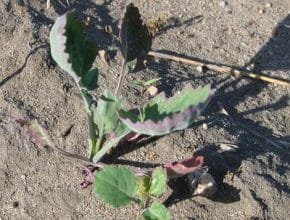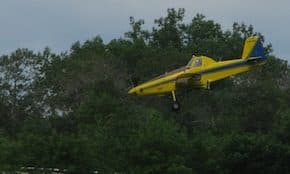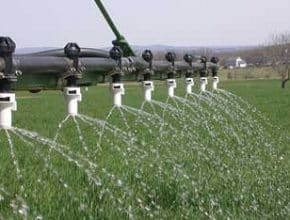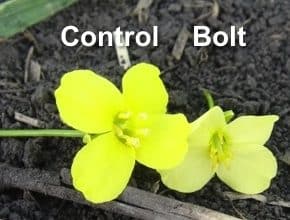Bees are good for canola. Canola is good for bees. Canola flowers provide an important source of nectar for honey producers in Western Canada: 80% of the honey produced in Canada comes from canola flowers. Honey bees and other pollinators can also increase canola yields. Although napus canola is self-pollinating, studies show that the extra level of pollination that bees…
Canola Watch Posts
-
-
Aster leafhopper numbers are quite low so far this year, down considerably from 2012. Aster leafhoppers carry aster yellows phytoplasma, so without leafhoppers to transfer the disease, there is no infection. Based on what we know at this stage, there is no evidence of a significant aster yellows risk for 2013…
-
Growers who used elemental sulphur as their only sulphur source may see deficiencies in this year’s crop. Elemental sulphur will not be available when the crop needs it. In following the 4-Rs of fertilizer, elemental sulphur applied at seeding is not the “right source” or the “right time.” Sulphur deficiency symptoms (see the photos) that appear at the bud to…
-
-
Nutrient and fungicide top dress treatments have been promoted to help heal and restart canola after hail. We don’t have published studies on using these or any treatments for this purpose in Western Canada, so it’s buyer beware. Leave a check strip to see if they improved yield. For products that require foliar uptake to work properly, severe hail damage…
-
Canola crops across the Prairies look very good, in general, and growers are optimistic at this stage of the season. Top-dress fertilizer is a hot topic this week. The most efficient way to apply fertilizer on the Prairies is during the seeding pass, but some circumstances do call for top up nitrogen or sulphur for canola. Seedling diseases such as…
-
Click here for more information on products, rates and timing for best results from a fertilizer top-dress. This article has just been updated. If you’re on the fence about a top-dress application, consider applying a rate high enough to make a difference — such as 30 pounds of nitrogen or 20 pound of sulphur — to part of a field…
-
Spraying late or at higher-than-label rates can reduce canola profits. AAFC research showed an advantage of 3 bu./ac. for controlling weeds at the 1-2 leaf stage of canola versus the 3-4 leaf stage, and a 7 bu./ac. advantage when applied early versus the 6-7 leaf stage. At $12 per bushel, that early control provides $36 to $84 per acre more…
-
Applications made when cool cloudy days follow cool nights will result in lower herbicide efficacy than applications made in warm sunny days. Cloudy days don’t provide the photosynthetic activity required for many herbicides, including Group 10 glufosinate. And nights near freezing followed by days with highs that barely reach 10 C will not provide high metabolic activity required for best…




